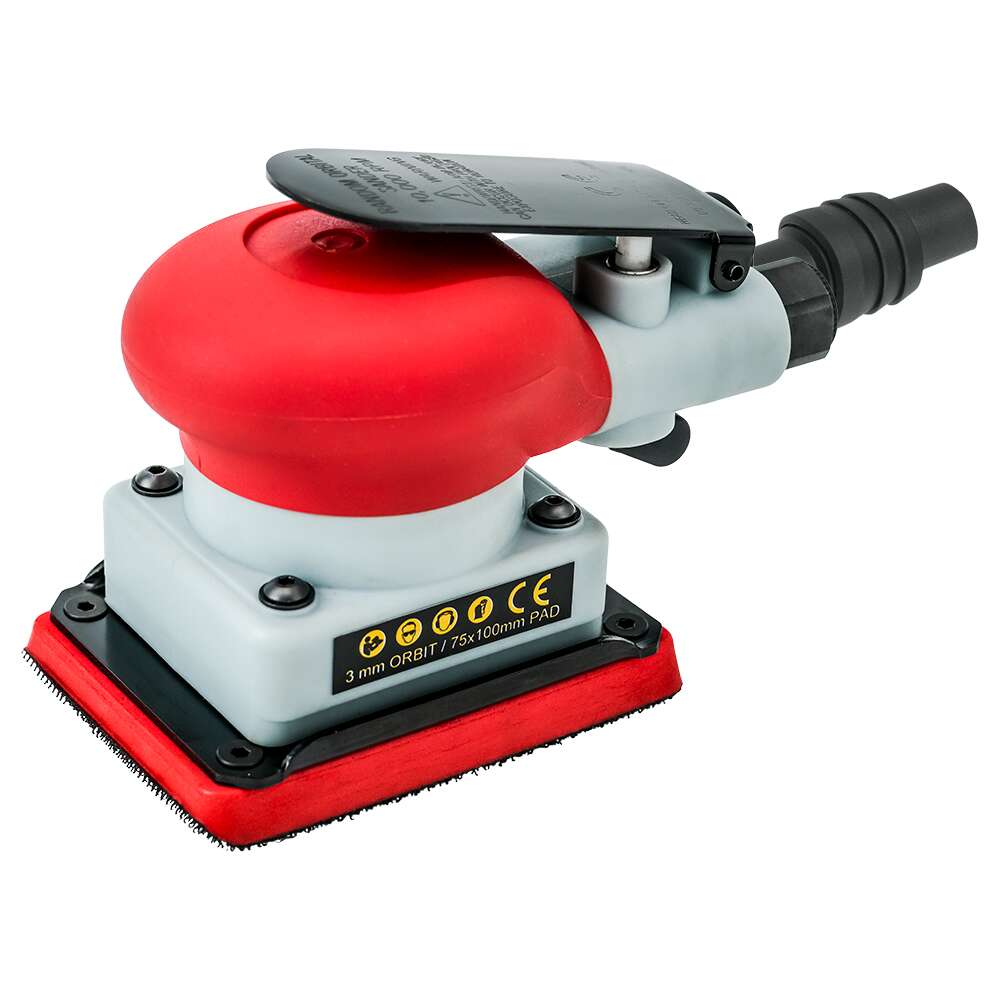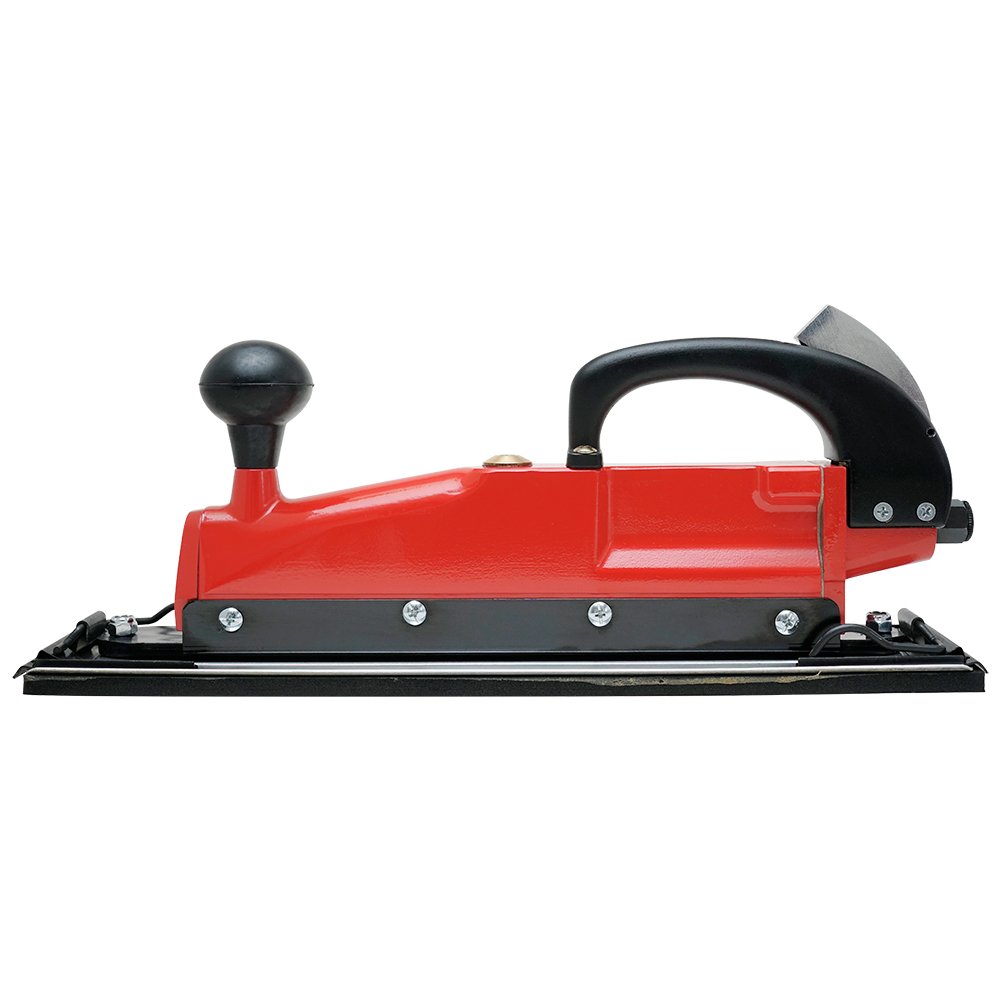How do you use a random orbit sander? What’s the difference between an orbital sander vs palm sander? Learn about the tool that takes the hassle out of sanding wood.
What is a random orbital sander used for?
A random orbit sander can sand the socks off your old vibrating sander when you’ve got to strip paint off furniture, prepare new molding, or clean up between finish coats. It can also smooth and clean metal and composite materials such as solid-surface countertops.
Random orbit sanders owe their versatility to their unique motion: The sandpaper disc spins in a circle while the whole pad moves in an oval loop. As a result, no single abrasive particle follows the same path twice, leaving a swirl-free finish even when sanding across the grain. But while random-orbits work more quickly than vibrating sanders, they can’t aggressively remove a lot of material—for that, get a belt sander for flat surfaces or a disc sander for curved ones.
When choosing a random orbit sander, look for a motor size, body configuration, and pad size (5– or 6-inch) that fits your workload. A decent palm-size unit will cost between $50 and $100, while heavy-duty right-angle or in-line ones cost $150 to $200. Whichever type suits you, be sure to get a model with built-in dust control. If you have a shop vacuum, you can connect the sander to it. You don’t want to breathe in any of the material that these sanders remove so effortlessly.
Palm Sander
For small projects, such as stripping furniture or sanding a drywall patch, a palm sander is tough enough to do the job but easy on the wallet. These little machines get their power by orbiting quickly—at least 10,000 times per minute. Compact and light, they can be held either over the top or around the neck, whichever is more comfortable.
Right-Angle Drive
With a houseful of millwork and cabinets to finish, you’ll need a sander that can work all day without overheating. An angle sanding machine, with its horizontal, runs a powerful motor at a relatively slow (and cool) 4,500 orbits per minute. This air tool is lightweight with a balanced design, which helps to reduce fatigue and has a muffled exhaust that keeps decibel levels low for quiet operation. Ball bearing construction provides vibration free performance.
In-Line Drive
When you face a lot of sanding but don’t feel comfortable with a big right-angle machine, try a unit whose motor sits above the pad. It’s a good compromise between small palm sanders and beefier models, especially for people with small hands, who can grab the handles fore and aft instead of having to grip a right-angle’s body.
Parts & Features of Random Orbit Sanders
Hook-and-Loop Disc
:no_upscale()/cdn.vox-cdn.com/uploads/chorus_asset/file/19513020/05_random_orbit.jpg)
Abrasive discs that attach by a hook-and-loop system allow you to change grits without trashing any disc before its time. They’re more expensive than adhesive discs, but more economical in the long run because they can be reused. Be sure to match the disc’s dust-collection holes to the ones on your machine’s pad.
Variable Speed
:no_upscale()/cdn.vox-cdn.com/uploads/chorus_asset/file/19513039/06_random_orbit.jpg)
You want your sander to remove material quickly, but not so aggressively that it chews through thin veneers or delicate coats of finish. The solution is variable-speed control. To get the most out of this feature, choose the tool with the widest range of speeds. A soft-start option, which lets the machine ramp up gently to full power, also helps protect tender work.
Starting and Stopping
To avoid scuff marks, always plants the disc on the surface before he starts the motor and lifts it off the work before shutting down. However, some sanders lurch hard when starting, which is liable to dig a deep (and annoying) divot; with those tools, it’s better to start in the air and then land flat on the work with the motor running. Experiment on scrap wood to see which approach works better with your machine.
Sanding Flat Surfaces

Glide the machine across the surface, working from side to side so you’re sure to sand everywhere without dwelling too long anywhere. You can sand the whole surface across the grain, then diagonal to the grain, then with the grain before changing to a finer grit. Keep the machine moving, but don’t press hard or “scrub”—the sander’s own weight, plus your gentle steering control, is most efficient and effective.
Sanding Edges
Lift the sander off the work when you want to move from a flat surface to an edge. If you flop it over, you’ll sand off the crisp corner. Center the edge on the pad and use both hands to help keep the pad square to the wood. A detail sander, which orbits without rotating, is an easy tool to guide along an edge.
Cleaning Up Dust After Sanding
Because of the sander’s motion, any stray grain of dust left on a work piece can cause deep scratches. Since even the best dust-control system will leave some particles behind, you can vacuum the work after each sanding and following with a tack cloth.







 How Does an Impact Wrench Work?“/>
How Does an Impact Wrench Work?“/> ما هي قوة حصان ضاغط الهواء التي يجب أن نختارها؟“/>
ما هي قوة حصان ضاغط الهواء التي يجب أن نختارها؟“/> 6 Uses for an Angle Grinder & Why Every Handyman Man Needs One?“/>
6 Uses for an Angle Grinder & Why Every Handyman Man Needs One?“/> How Much Torque Do I Need In An Impact Wrench?“/>
How Much Torque Do I Need In An Impact Wrench?“/> Can I Use An Angle Grinder To Level Concrete?“/>
Can I Use An Angle Grinder To Level Concrete?“/> DIE GRINDER VS ANGLE GRINDER – WHICH IS BEST FOR YOUR NEEDS?“/>
DIE GRINDER VS ANGLE GRINDER – WHICH IS BEST FOR YOUR NEEDS?“/>